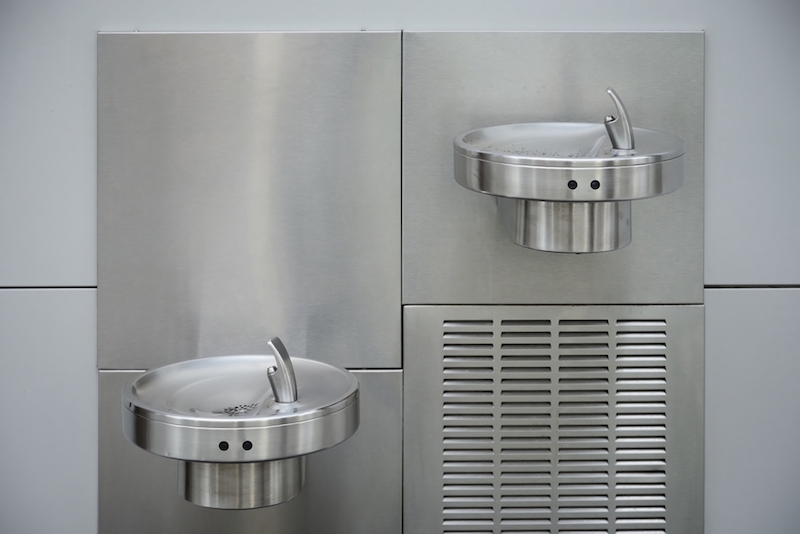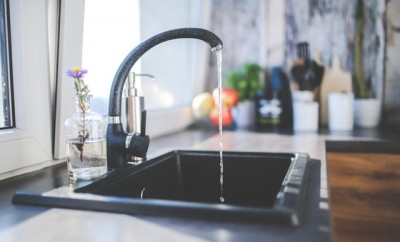Breaking News
California’s poorest residents face highest levels of arsenic in drinking water

Image: Shutterstock/JIPEN
Although California leads the way on many environmentally-conscious endeavors, they appear to have dropped the ball on several communities of low-income residents for a few years now. According to the Environmental Integrity Project, a nonprofit advocacy organization, many low-income California state residents have been receiving arsenic-laced water for quite some time.
What are the health risks?
Since arsenic is a known carcinogen also linked to diabetes, developmental difficulties and heart disease, the issue is of grave concern to the likely 55,000 Californians at risk. Prolonged exposure increases the risk of serious health dangers, according to the executive director of EIP, Eric Schaeffer, who recommends residents take precautions to avoid the water until arsenic levels decrease. Schaeffer insists the state has not sufficiently warned people in public notices when they should stop drinking or cooking with the water.
What has been done?
Since the original report by the EPA (Environmental Protection Agency) found California to be in noncompliance with the federal Safe Drinking Water Act in 2013, the effected water systems have been reduced by 192—down to 95 from a whopping 287 in the first report. California has doubled the funding for water treatment plants and pipelines since the first violation and has substantially reduced contaminants in the drinking water, and therefore were found in May to be in compliance by the EPA. But there’s plenty of work remaining, according to a report by the State Water Resources Control Board, as the state continues to provide certain areas with illegal levels of arsenic.
The issue of wealth disparity
The biggest problem which lingers is this: Wealthier, larger communities can afford pricey filtration systems low-income populations cannot. Predominantly African-American and Latino neighborhoods are drinking far more arsenic than other groups of Californians, with the report explaining such at-risk groups comprise numbers around “80% exposed to excessive arsenic levels for at least five years and probably longer.”
Although arsenic is a naturally-occurring aspect of groundwater in California, it does remain a carcinogen which considerably damages children’s brains, leads to hypertension and other health issues. The EPA states that the “risk of developing cancer after a lifetime of drinking water containing 10 ppb arsenic is one in 2,000.”
Where were the highest levels found?
The highest levels of arsenic measured in years 2011 through 2015 were located in a California group home for troubled teenaged boys in the county of Madera, with reported concentrations of more than 120 ppb—which equals at least twelve times the federally-imposed limit. Twelve mobile home parks, one military base and thirteen school districts in the state also had levels above 10 ppb. A total of 58 communities outside of the trailer parks were found to be above the legal arsenic limit, and while the existence of such a problem is bad enough, the residents were not sufficiently warned of the risks of drinking the water.
The issue of words
One area of discrepancy lies in the wording of public notices vs. private ones. For example, Schaeffer shares that the typical public notice would say, “This is not an emergency; you do not need to use an alternative water supply, e.g., bottled water,” but notices given to private well-owners would say “If you suspect that your well may have arsenic, you should not use the water until it is tested and you should take appropriate measures to protect yourself and your family.”
The State Water Resources Control Board states there’s an explanation for the difference in notices. For municipal customers, the increase in arsenic only “poses possible health risks after long-term exposure—70-plus years of drinking two liters of arsenic-contaminated water a day above the maximum contaminant level. There are no known acute/immediate health effects that would cause consumers to immediately stop drinking the water,” while for well owners, “it would be recommended to refrain from drinking the water until it is known how high the arsenic level is.”
What needs to happen now?
Several recommendations are indicated in the report, such as increasing information to residents about water filters, increasing investments on the upgrades of current drinking water systems, and—the most essential piece—advising residents to stop drinking the water.
University of California senior scientist Ashok Gadgil shared the feeling that, “The least we should do is communicate the risk very clearly,” he said. “We cannot abandon people who cannot afford an arsenic remediation system or buy bottled water. We don’t leave people to face the horrific risks of cancer just because they happen to be not in my backyard.”





0 comments